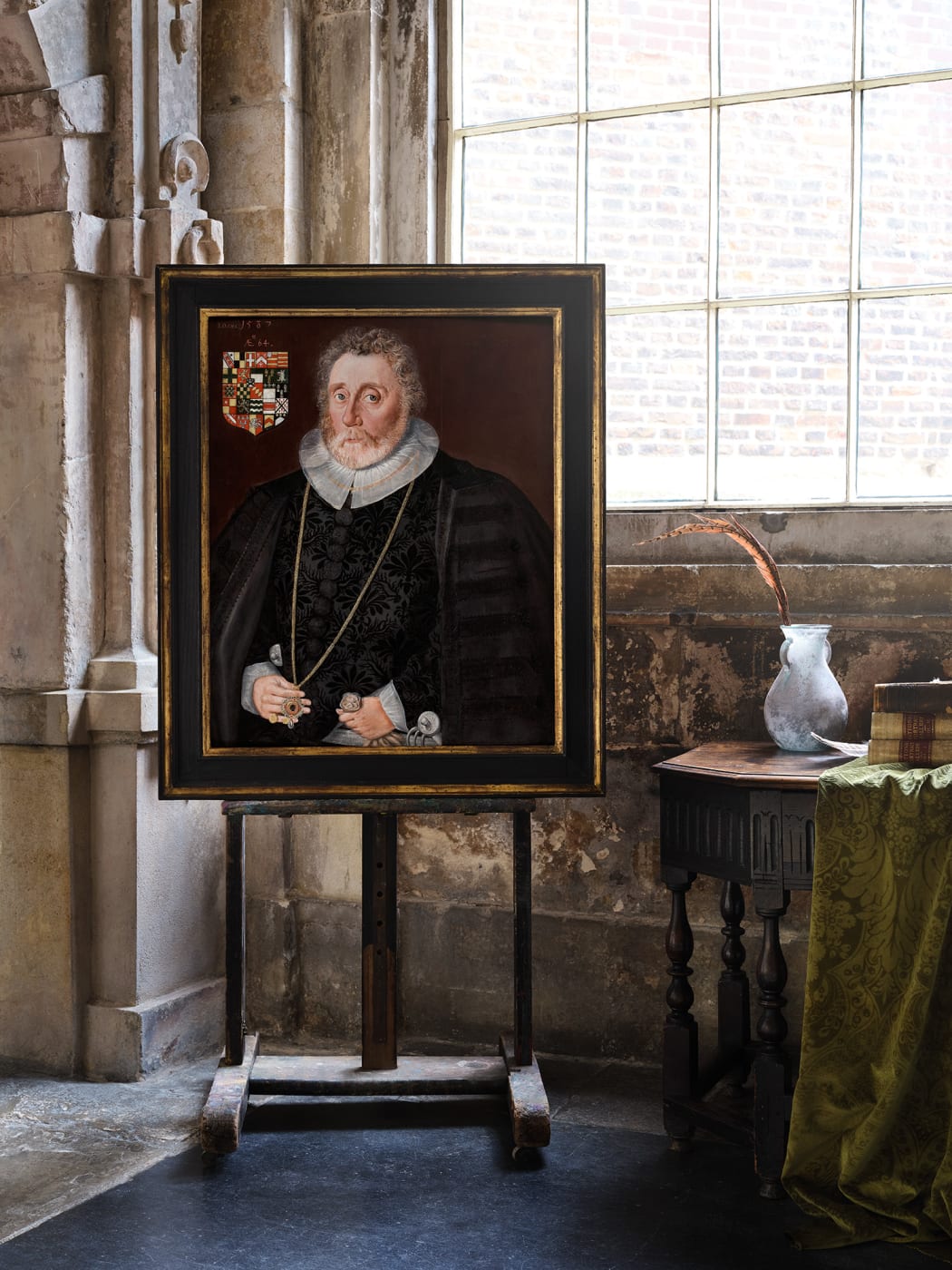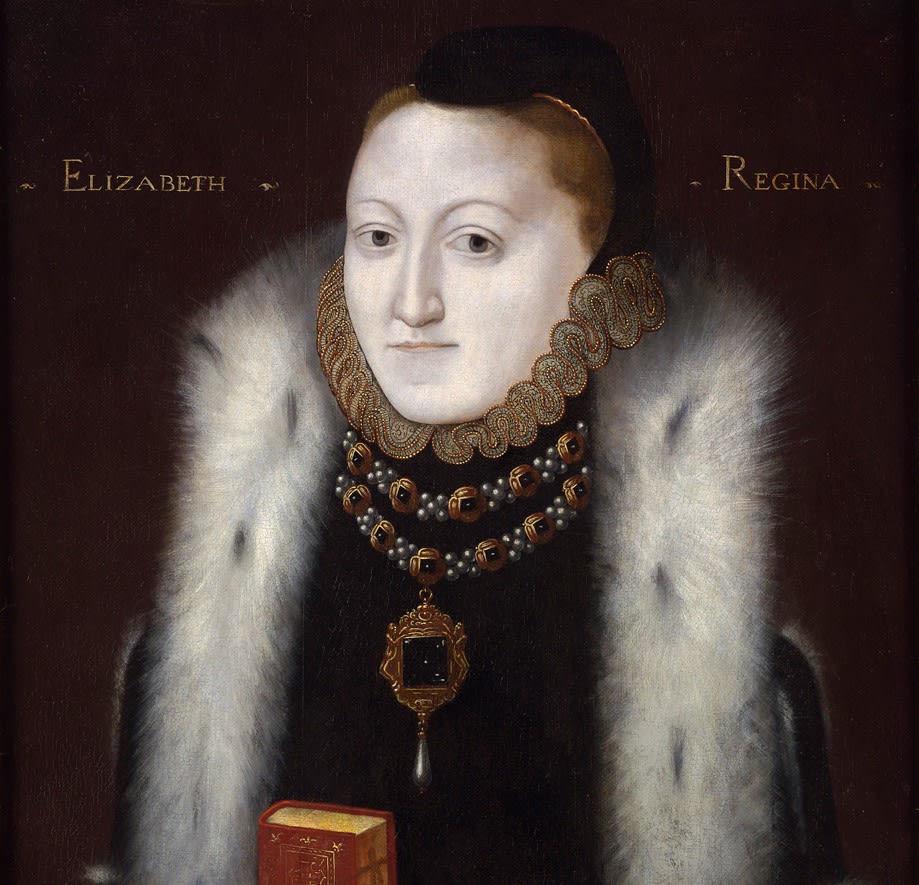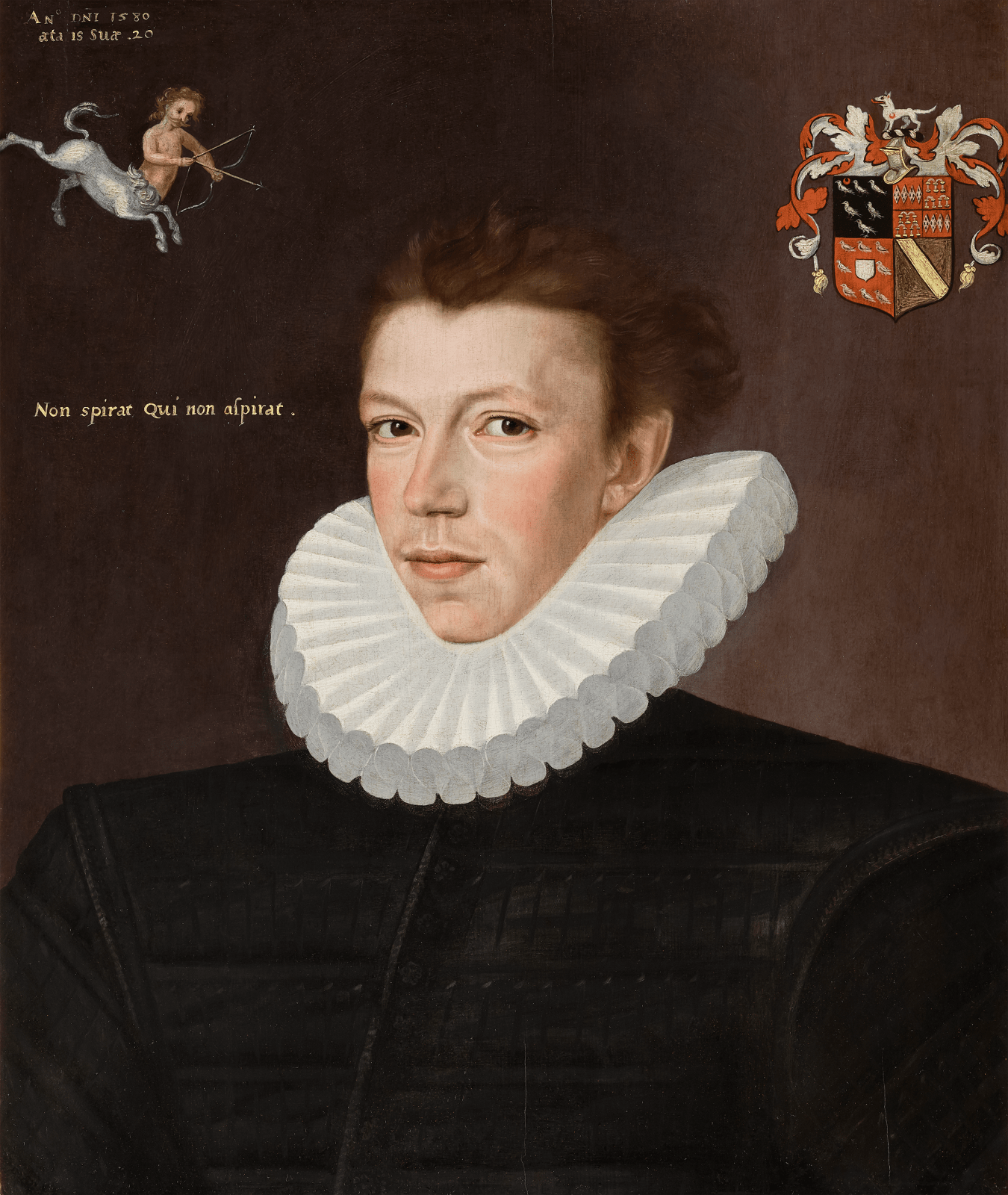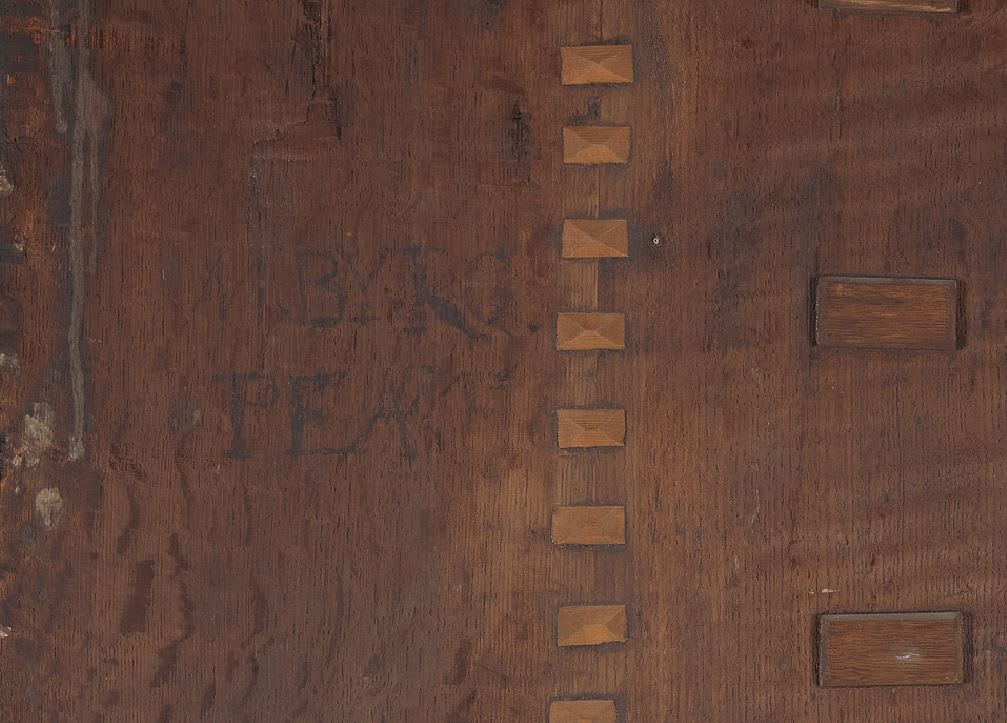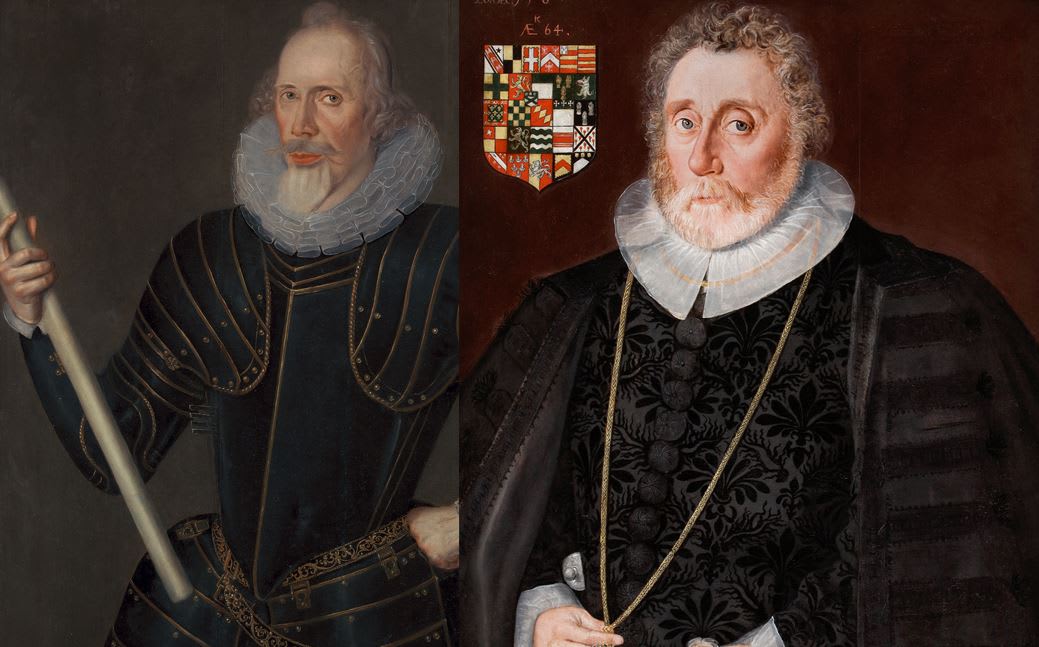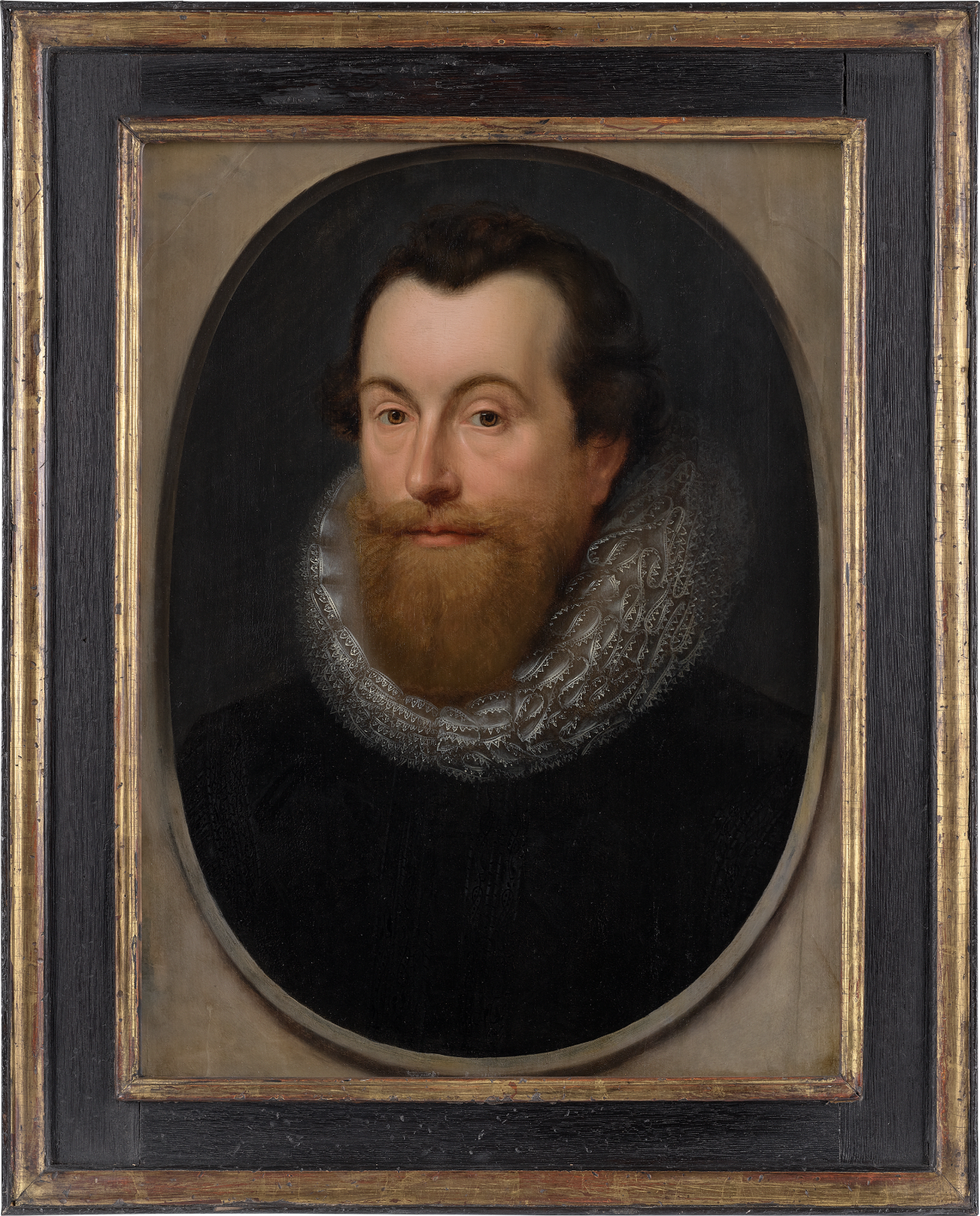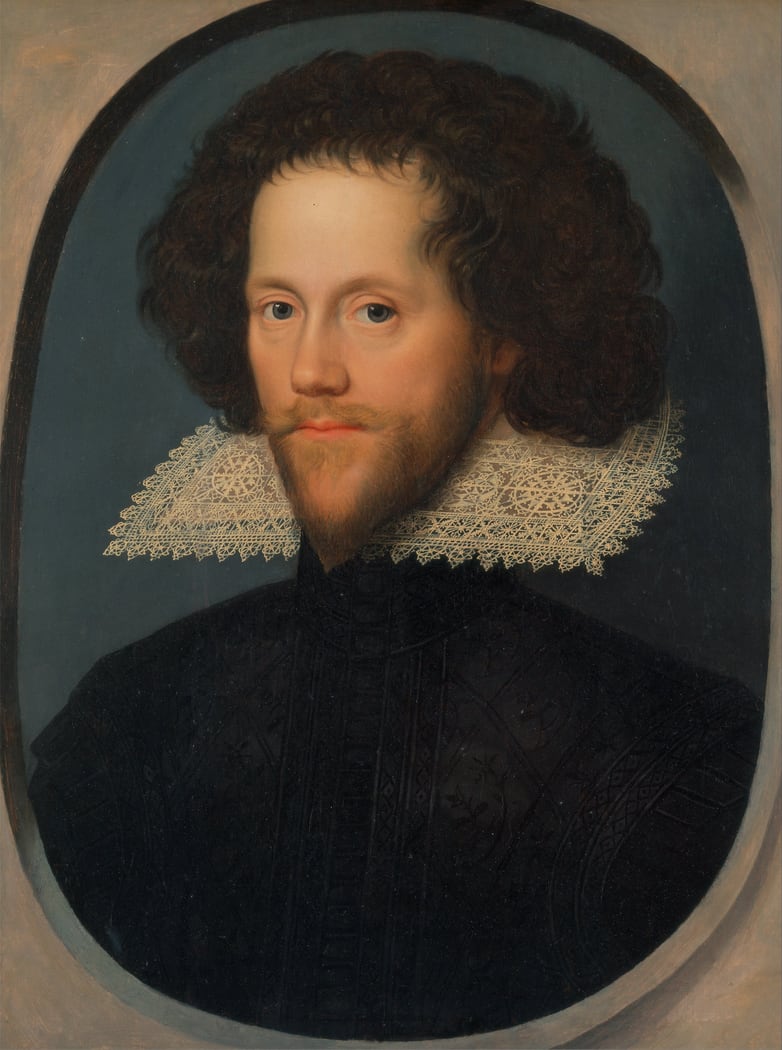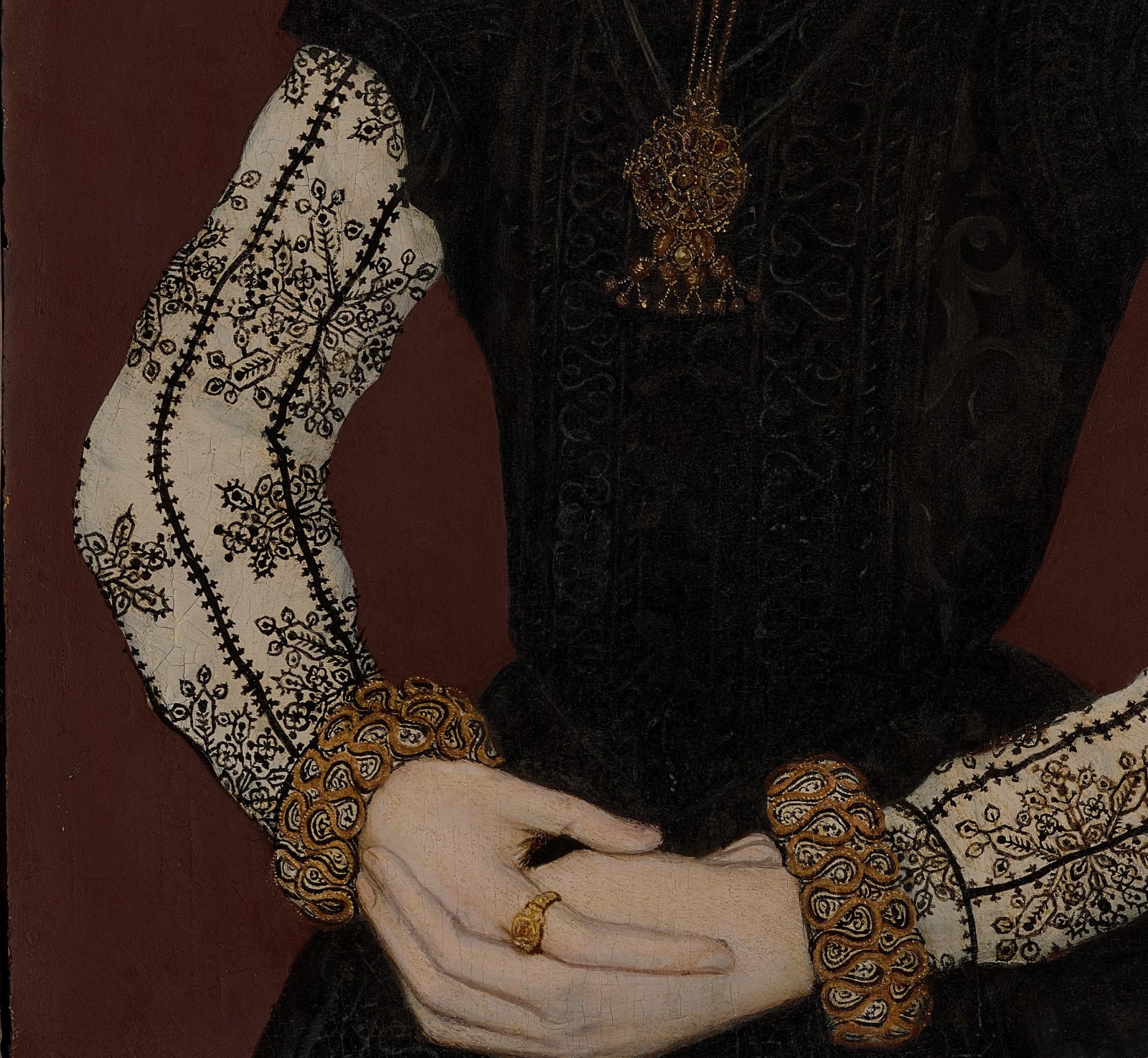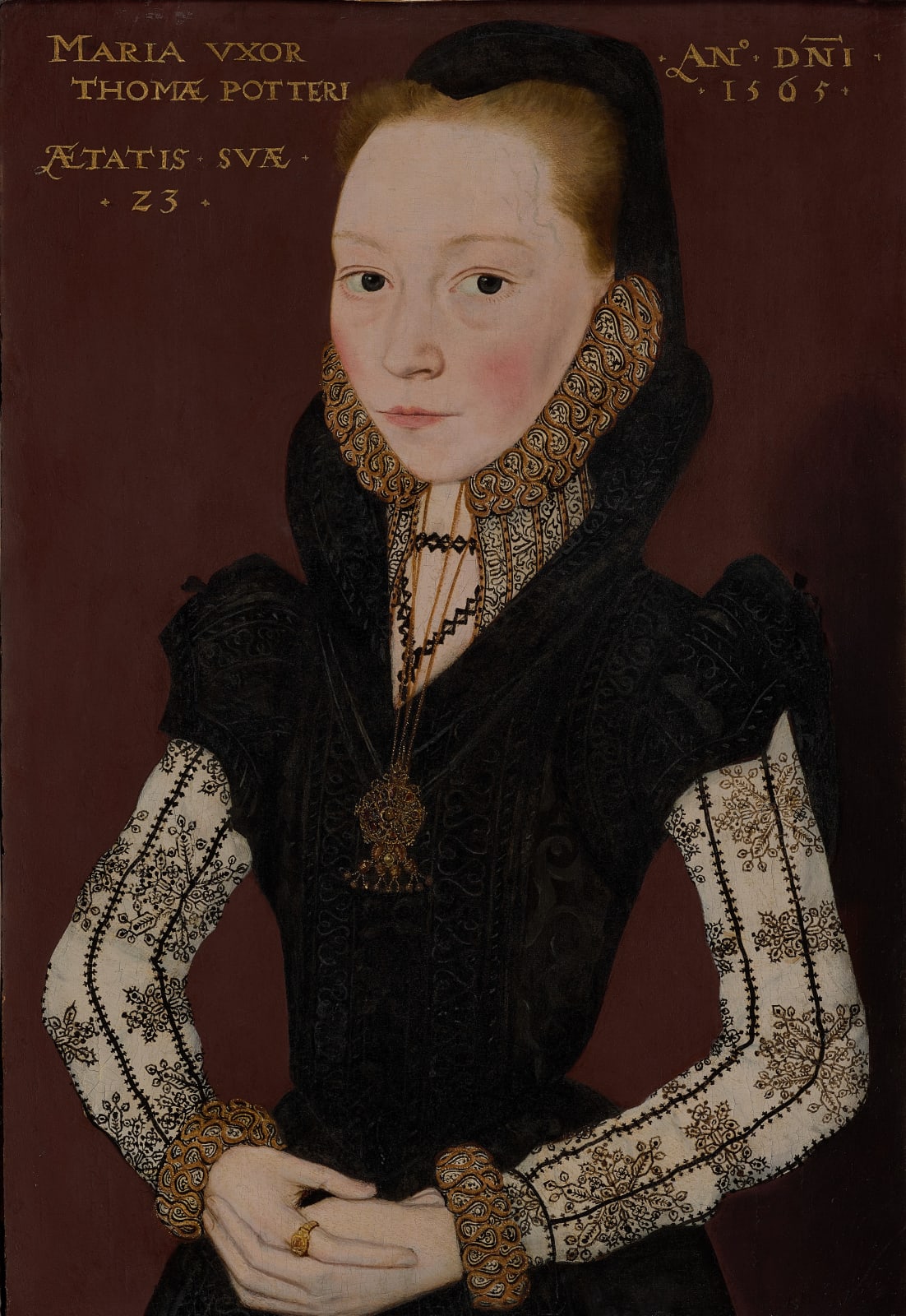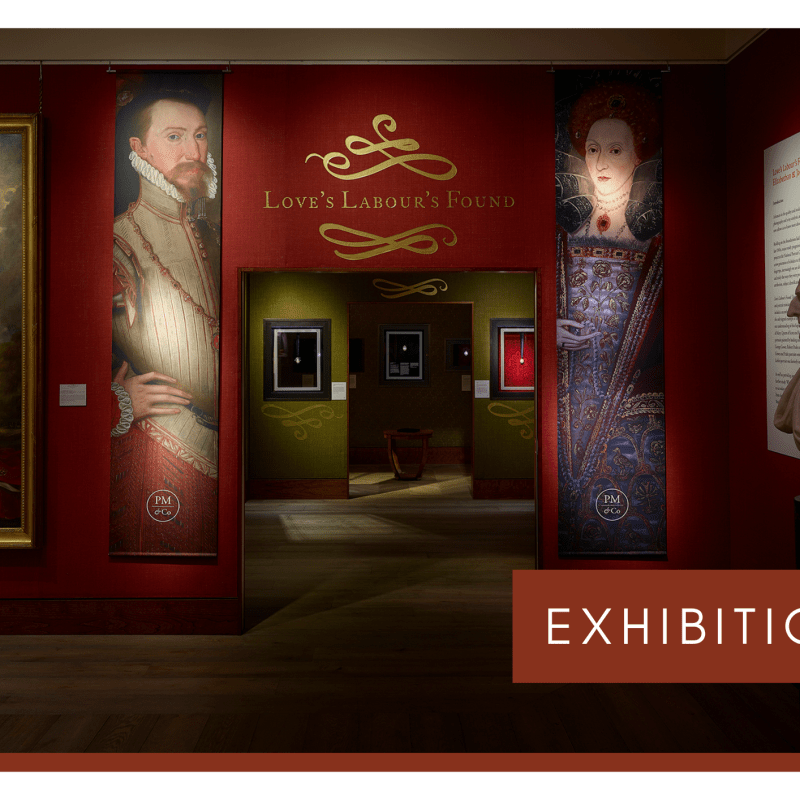‘The Elizabethan and Jacobean Scene’ Revisited: Attribution, Archives and Analysis in the digital age.
Jessica David is Senior Paintings Conservator at the Yale Center for British Art.
Dr. Edward Town is Head of Collections Information and Access at the Yale Center for British Art.
Half a century has passed since the late Sir Oliver Millar published his review of the two books, exhibition and its accompanying exhibition catalogue, all produced by Sir Roy Strong over the course of the previous year; an astonishing accomplishment which Millar acknowledged as nothing less than ‘heroic’.[1] Fifty years on, returning to Millar’s review, which appeared in The Burlington Magazine under the title ‘The Elizabethan and Jacobean Scene’ seems both timely and necessary. Writing in the spring of 1970, Millar could sense that almost overnight a huge contribution had made to a field of scholarship sorely in need of attention. And yet he could see trouble on the horizon, warning that: ‘[t]he less scrupulous now have a whole new repertory of smart names’ he feared could be ascribed to paintings as they entered the market. Time has proved this to have been prophetic: so it came to pass in the five decades that followed the appearance of The English Icon and The Elizabethan Image that attributions were made to the handful of artists that Strong’s publications made household names, some of which were accurate, many of which were not.
Today, it might seem uncharitable to revisit Millar’s critiques of a set of pioneering publications put out into the world in a valiant attempt to chart an unknown landscape and (to labour the metaphor) provide a map for others to follow. So it is important to note that the oeuvres outlined by Strong for John Bettes the Elder, William Scrots, Gerlach Flicke, Hans Eworth, the Master of Countess of Warwick, Cornelis Ketel, Nicholas Hilliard, George Gower, John Bettes the Younger, Hieronymus Custodis, Robert Peake the Elder, Marcus Gheeraerts the Younger and William Larkin have served as a basis for all subsequent studies of their careers. Indeed, they inform and underpin the comparisons made below in this short essay. That said, those for Steven van der Meulen, Arnold van Bronkhorst, William Segar, and John de Critz the Elder had flaws that have taken considerable time to unpick. Perhaps it was inevitable therefore that the next generation of scholars to work on this subject, in particular Karen Hearn and Rica Jones[2] were diligent in applying rigour and caution in equal measure in an attempt to bring order to what had become an increasingly muddled field. Underpinning this approach was a blend of traditional art historical enquiry with technical analysis undertaken by conservation science. The techniques of analysis most valuable to Tudor and early Stuart painting – Xray, infrared photography, microscopy, and dendrochronology (the dating of panel supports through the sequencing of their tree-rings) – were not necessarily new to art history but, when applied in a systematic fashion to a large tranche of pictures, exposed trends and patterns in production that in some cases helped cohobate, but in other cases undid longstanding attributions.
Surveys of the major national collections firstly at Tate and then at the National Portrait Gallery, London, the latter under the auspices of the Making Art in Tudor Britain project brought a new generation of scholars to the field, and for the first time there was talk of the accumulation of a ‘critical mass’ of data that would help unlock the complicated problem of providing attributions for pictures that were rarely signed or documented in the paper archive.[3] In the short term, this often meant removing long-standing connoisseurial attributions in favour of less specific categories of authorship such as ‘Unknown Anglo-Netherlandish’ artist: a broad church that encompassed work by both the Flemish painters active in England and also the native-born painters who sought to emulate the skills of the talented ‘strangers’ but clung on to the use of archaic techniques such as pouncing [Fig. 1] or gilding with either shell gold or gold leaf. [Fig. 2] The perceived range in sophistication (and/or value) of such portraits, with a foreign Netherlandish aesthetic at its pinnacle and the home-grown or, worse still ‘vernacular’ tradition at its base, is also undergoing revision, particularly as the careers of regional artists come into view after centuries of obscurity.
The last decade has seen research undertaken by the present authors and many others in the same vein: that is, combining research in the archive, close looking and comparison with multispectral imaging, material analysis and dendrochronology, but crucially returning to the question of authorship and attribution with greater purpose than before. If there has been one technologic innovation that has aided these endeavours, it has been digital photography and with that the ability to capture high-resolution images of objects in both regular and infra-red light – within collections, in situ at country houses, churches or wherever they might be – and crucially, the ability to aggregate and share these images with other experts in academic, museum and other professional specialisms. This has had a transformative effect on the field and has helped overcome the fundamental issue that Millar had with an aspect of Strong’s approach to assembling The English Icon: namely, that black and white photographs were not always sufficient in providing the visual information required to make accurate attributions. Concurrent with these recent innovations in photographic reproduction of artworks have been the various digitization projects in manuscript and archive collections which have increased access to catalogues and the records they contain enumerating payments or providing new biographical information about makers, resulting in ambitious projects such as Robert Tittler’s database of early modern painters.[4]
The benefits of aggregating large amounts of data from paper- and photo-archives and pairing it with evidence with improved forms technical analysis is becoming increasingly obvious. For one, it is abundantly clear that there are vastly more paintings and many more painters than the 364 paintings and thirty painters included in The English Icon. Comprehensive though it may have been at the time, The English Icon did not make claims of being either definitive or exhaustive, and yet the numbers of paintings and painters that we have at our disposal today may still surprise: a thorough survey in the archives reveals that of the 848 painters active in London alone between 1547–1625 well over 100 can be identified (at least in the paper record) as painters of easel paintings,[5] while a survey of various photo archives on both sides of the Atlantic records that there are (at the time of writing) close to 6000 paintings from this period for which photographic records survive. It seems dangerous to speculate in terms of numbers, but there must still be many more paintings held in private ownership for which there is no photographic record. These pictures may briefly emerge on the market before returning behind closed doors, underlining the value of resources such as the Historical Portraits database maintained by Philip Mould & Co.[6]
Although it has been shown to have some limitations, The English Icon correctly identified the names of the most important painters of the Tudor and Jacobean courts, and these remain the first point of reference when the question of attribution arises. Six paintings included in this current exhibition provide a case in point: despite none being signed or linked to documentary records, each are by a distinct and recognizable hand, which in most cases can be identified with a named artist. The earliest of these is by a painter whose identity remains uncertain, but who can be associated with a number of paintings from the mid-to-late 1560s, after which this artist vanishes from view. As Strong observed, these portraits show the clear influence of the Flemish painter Hans Eworth, who had come to England at some point in the early 1540s.
In The English Icon Strong identified eight paintings by this artist and created an oeuvre under the moniker ‘The Master of the Countess of Warwick’, whose name is taken from the eponymous portrait of Anne Russell, Countess of Warwick at Woburn Abbey, Bedfordshire. With their clasped hands and cast shadows, works such as Mary Potter, nee Tichborne [Fig. 3] emulate but do not achieve the pious intensity Eworth was able to achieve in his portraits of the same period. From the initial corpus of eight paintings identified by Strong it is now possible to consider a group of over fifty pictures which share a quality of crisp draftsmanship combined with a careful, sequential layering of paint, akin to, but not as illusionistically convincing or nuanced as, Eworth’s tactile flesh and textiles. Elongation of the sitters’ arms and torsos – combined with a stylized, almost Gothic narrowing of the silhouette, tapered fingers, often in awkward collision, and a somewhat uncomfortable marriage of head to torso – result in willowy but stilted postures. The ‘Master’ applied paint leanly and, for the most part, wet over dry. Flesh passages, for example, were began similarly to Eworth’s approach, with transparent brown underpainting over which semi-opaque flesh tones were scumbled to form cool shadows through upper layers, an effect associated with painters from the Low Countries sometimes described as the ‘turbid medium effect’, giving a sense of the skull beneath the skin (especially around the eye sockets, cheekbones and nose) and blue veins beneath the temple. Textiles and jewels show a similarly restrained system, each stage permitted to dry before the next was applied, details like embroidery (such as on Potter’s sleeves) or sparse strokes of shell gold (on her ring) added at the very end of a long process of painting and waiting well suited to a workshop practice where the labour could be divided over many weeks by numerous hands.
It is possible to tentatively offer an identity to the mysterious but remarkably popular Master of the Countess of Warwick.[7] Arnold Derickson was a servant in the workshop of Hans Eworth in the late 1540s, when presumably he received his training as an artist. He later moved from Eworth’s studio in Southwark to Westminster and the parish of St. Martin in the Fields, which was home to the English court painter John Bettes the Elder, who was the most successful exponent of Hans Holbein’s style. Derickson married into the Bettes family and after the death of John Bettes the Elder in 1563 remained in Westminster and continued his own workshop there. Payments in the records of Sir Henry Sidney in 1565–66 enumerate payment to a painter called ‘Arnold’, who has in the past been identified as Arnold van Bronkorst, an artist who is first recorded in London in 1573. Time will tell whether this identification of the Master of the Countess of Warwick as Arnold Derickson endures, but of all the painters whose lives can be traced in the paper archive it is his biography which matches the profile of this artist most comfortably. Remarkably, in spite of this painter’s limitations and obvious inferiority to Eworth, the Master of the Countess of Warwick enjoyed unparalleled popularity in the second half of the 1560s, heading up what must have been a busy and well-staffed workshop. In fact, his popularity surpassed that of Eworth, perhaps he was willing to run a larger operation and complete commissions quicker than the more talented Eworth. His complete disappearance at the beginning of the following decade might have been the consequence of a debilitating illness similar to John de Critz’s loss of sight,[8] incapacitating the artist and paving the way for George Gower to emerge as the next preeminent painter at Court.
Gower came from a family of committed Protestant merchants and craftsmen who had fled London during Mary I’s reign to their ancestral homeland of Yorkshire, where their family were members of the gentry.[9] This did not prevent Gower from taking commissions from Catholic families, such as in 1580 when he painted the twenty-year-old William Arundell [Fig. 4]. Members of Arundell’s Willoughby family had also been patrons of Gower in the previous decade, seizing upon his courtly knowledge of Latin, Italian and French, and his pretensions as a poet as well as a painter, and here adding a depiction of Arundell’s Sagittarian status next to the inscription recording his age in 1580. Stylistically, Gower’s portraits contain elements of both the Master of the Countess of Warwick’s well-drawn faces set in stylized, somewhat flat compositions that lean more towards the decorative than illusionistic, and Bettes’s tactile, volumetric subjects where detail is described with an almost trompe l’oeil precision without detracting from the overall harmony of the picture. Gower’s portrait of Arundell shows an overall thicker build-up of paint than the ‘Master’ employed, yielding an alabaster-like quality to the flesh and corporeality to the figure that is closer in approach to Bettes, yet Gower did not exploit his paint or brushwork enough to strongly differentiate flesh from silk, metal and fur, as Bettes did. Arundell’s face was begun in much the same manner as Potter, with no evident underdrawing but careful brown underpainting to reinforce facial features and suggest volume. However, the quantity of paint Gower added above this all but obliterated that subtle stage of planning, resulting in a completely opaque, relief-like mask on top of which he added fine paint strokes to emphasize individual characteristics. The overall effect resembles that of the Master of the Countess of Warwick but is technically distinctive. For example, glazes of blue-containing cool shadows were added on top of Arundell’s flesh (on the nostril, temple) rather than exploiting the oil paint’s inherent transparency to show the cool, dark underpainting and light ground beneath. [Fig. 5] This additive approach, the application of layer over layer to build volume with opaque paint mixtures, lends a strikingly ‘solid’ appearance to Gower’s portraits, and is unique among his contemporaries of high standing as a notably un-Netherlandish, and highly recognizable, aesthetic.
A phenomenon of the period is that very few of the portraitists of the Tudor and Stuart courts were members of the Painter-Stainers’ Company. George Gower was a member of the Mercers’, Robert Peake – the painter to take on Gower’s mantle and to eventually also to become Serjeant-Painter – was a member of the Goldsmiths’ Company as was Nichols Hillard. Peake gained the freedom on the Goldsmiths’ Company in 1576 having served his apprenticeship under Lawrence Woodham, who is not known to have been a painter, but presumably allowed the young Peake to pursue his training elsewhere. Like painters of the period, Peake did not routinely sign his name on the front of his pictures. However, his name does appear on the back of a portrait at the Yale Center for British Art, providing evidence of what may have been a more prevalent practice of claiming authorship on the back of panel or canvas supports, which are now lost through the cradles, linings, and obscuring interventions into the backs of paintings. [Fig.6] Although there is evidence to suggest that Peake had been operating his own studio since 1582, the year 1587 seems to have been a year of real significance for Peake. For if the survival rate of pictures by him can be read as an index of his popularity, his career seems to have reached new levels of success in the last years of the 1580s. This may have come a consequence of his portraits of the Babington conspirators being shown to the Queen at court in the summer of 1586.[10]
Richard Wingfield makes a comfortable comparison to the signed Yale portrait (Fig. 7). The two portraits depict men in their sixties positioned closely to the picture plane, their flesh marked by age and their direct gazes slightly watery. [Fig. 8] Their austerity strikes a different note from the vibrant large-scale portrayals of Henry Frederick, Prince of Wales and his sister Elizabeth (later Queen of Bohemia) on canvas, or the portraits of Anne and Elizabeth Pope, now at Tate Britain. Yet, certain stylistic and technical commonalities sustained Peake’s long career, and even among his large-scale pictures of which several versions were produced, his draftsmanship and paint handling is consistent. His figures tend to be accurately proportioned, their faces individual, the paint applied loosely (compared to the artists discussed above), and with a sense of confidence that lends even his complex compositions an energetic facileness.
Like Gower, there is rarely evidence of drawing or extensive planning on Peake’s paintings, but unlike Gower or the Master of the Countess of Warwick, Peake let his process show. He typically worked wet-in-wet and although he blended the paint to a smoother finish on his younger sitters’ flesh, all of his subjects retained a soft-edged animation, their cool, transparent flesh dappled with loose, unblended highlights, their lips (when not hidden by moustache) invariably conformed to Peake’s idiosyncratic cupid bow-shape.
The final painter included in this exhibition– William Larkin –was born in Elizabethan London but spent his career at the Jacobean Court. Larkin seems to have worked almost exclusively in two formats: at full length using canvas supports, and at bust length using a feigned oval on panel. Larkin was the doyen of the bold and the glittering of the Jacobean court but occasionally accepted commissions for portraits of older, less glamorous sitters. This seems to be the case with the current sitter, whose identity remains a mystery. Larkin’s unmatched skill was to manipulate paint and the use of his brush work to render a dazzling array of textures. This is evident even in his more restrained pictures, here showcased by the unknown sitter’s velvety flesh, softly coiffed waves, wiry beard hairs and tiers of starchy lace. [Fig.9]
Comparison to contemporary portraits like Yale’s Sir William Pope underlines his use of set formulas to capture each component in the picture – the paint applied thinly, rarely in more than three layers, laid wet-in-wet on flesh and hair and wet-over-dry on textiles and jewels. [Fig. 10] This was a systematic approach that was so judiciously applied that it never appeared formulaic. The complexity of Larkin’s lace, for example, is something of an optical illusion, built in several layers beginning with a transparent brown wash that barely covers the light ground layer. The lace was then added in one go, a fine-tipped brush dragging strings of viscous paint that overlap and sit proud of the panel surface, as if the oil paint itself was woven together. A final pass of highlights and shadows were applied sparsely and strategically to lend a calculated randomness to the undulating ruffles. Openings between the lace seem to recede inward, as if revealing the sitter’s neck through transparent linen.
In the final line of his 1970 review, Millar set out a call to action, reminding his readers that: ‘Documentary research and a humble and painstaking examination of the pictures cannot fail to bring their reward’.[11] This is no truer now than it was then. Somewhere out there is a self-portrait of William Larkin, recorded in 1618 in the collection of his patron the Earl of Dorset.[12] As this, and many of the paintings discussed here would suggest, there is still so much to discover, so much waiting to be found.
[1] Millar, O. (1970) ‘The Elizabethan and Jacobean Scene’, The Burlington Magazine, Vol. 112, No. 804, p. 174.
[2] Hearn, K. (1995) Dynasties: Painting in Tudor and Jacobean England 1530-1630, London: Tate Publishing.
[3] Cooper, T, Burnstock, A, Howard, M & Town, E (eds.) (2015) Painting in Britain 1500-1630: Production, Influences and Patronage, Oxford: Oxford University Press for the British Academy.
[4] Tittler, R. (2021) Early Modern British Painters, c. 1500 – 1640. [online] Available at: https://spectrum.library.concordia.ca/980096/ [accessed 23 Feb. 2021].
[5] Town, E. (2014) ‘A Biographical Dictionary of London Painters 1547-1625’, The Walpole Society, LXXVI, pp. 1–235.
[6] Philip Mould & Company (2021) Historical Portraits. [online] Available at: http://www.historicalportraits.com/Gallery.asp [accessed 23 Feb. 2021].
[7] Town, E. (2020) ‘A Portrait of the Miniaturist as a Young Man: Nicholas Hilliard and the Painters of 1560s London’, British Art Studies, Issue 17 [online] Available at: https://doi.org/10.17658/issn.2058-5462/issue-17/etown [accessed 21 Feb. 2021].
[8] Town, E. (2012) ‘“Whilst he had his perfect sight” – new information on John de Critz the Elder’, The Burlington Magazine, Vol. 154, No. 1312, pp. 482–462.
[9] Town, E & David, J. (2020) ‘George Gower (ca. 1538-1596): Portraitist, Mercer, Serjeant-Painter’, The Burlington Magazine, Vol. 162, no. 1410, pp. 738-755.
[10] Younger, N. (2014) ‘Robert Peake (c1551-1619) and the Babington Plot’, The British Art Journal, Vol. 14, No. 2, pp.65-67.
[11] Millar, (1970) ‘Elizabethan and Jacobean Scene’, p. 175.
[12] Town, E. (2018) ‘The Owl in the Desert: Lady Anne Clifford at Knole, 1609-1624’, National Trust Houses and Collections Annual, pp.12–18.
